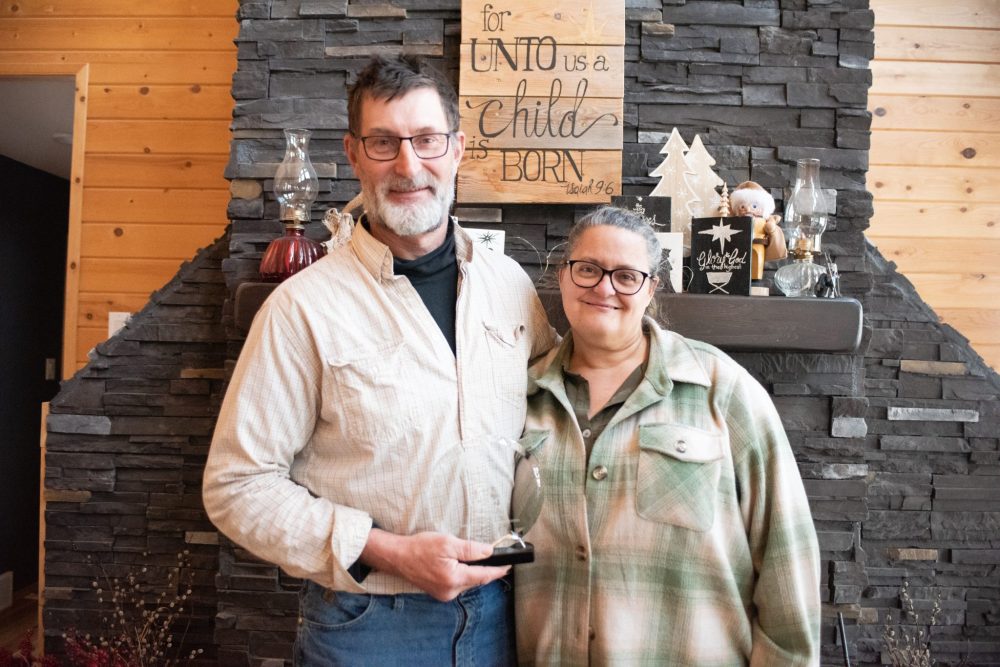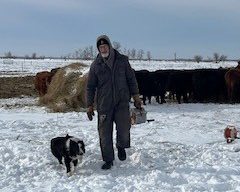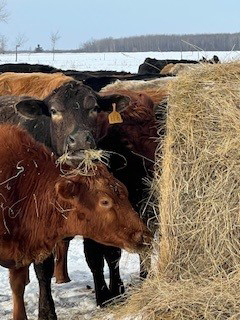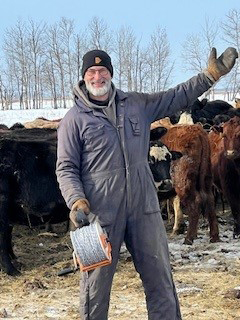Sundown farmer wins watershed district award for rotational grazing, cover crops
Advertisement
Sundown area farmers Randy and Joyska Tkachyk have been practicing regenerative agriculture sporadically for 15 years and intensively for the past four years. Because of their passion for responsible farming and eagerness to protect the environment, they have won the Manitoba Watershed Association’s Seine Rat Roseau Watershed District Award for regenerative agricultural practices on their beef farm.
“(They’re) really big into regenerative agriculture and Randy is also open and willing to have people come to his farm to see what he is doing and showing them exactly what it looks like and what you can do in your (farm),” said SRRWD district manager Joey Pankiw.
Tkachyk has a YouTube channel called Life on a Manitoba Farm where he shares his farming experiences.

Tkachyk said he was honoured by the award and that it is only a recognition, but that it’s more rewarding to see the results on the farm and what the outcomes are for the future.
“We’re not depilating our soil and our soil is not being blown away into ditches or being put into rivers or lakes. We’re keeping everything here. Our soil is like a little factory for us,” he said.
The Tkachyk ranch is a third-generation farm that was established in 1907 when Tkachyk’s grandparents from Austria and the Ukraine came and established their roots in Manitoba.
The farm boasts about 1,200 acres with 80 rotational grazing paddocks ranging in size from two acres to 25 acres used to raise cows and calves. Cattle are placed on fresh grass every three to five days during the summer months and during the winter they eat from bales which allows them to fertilize a patch of land and minimize tractor use. They return to the original paddock every 45 to 65 days.
“Rotational grazing helps soil health, improves soil biology, organic matter, and sequestration carbon,” said Randy Tkachyk. “(It) helps the soil retain moisture and resist erosion, reduces runoff and improves water quality.”

Tkachyk, who calls himself a grass farmer, said his method of farming leads to fewer herd health problems, reduces machinery costs, supplemental feeding, and cattle can graze late into the season.
“He’s a really good example for other people who are trying to get into regenerative agriculture that you can be doing good things for the environment, but still be a profitable business and make it a longer lasting enterprise for him and his family. It’s a really good example of people making that transition and showing how to do it and why it works,” said Pankiw.
Tkachyk’s journey into regenerative agriculture began for financial reasons. He found that with a cover crop and rotational grazing he doesn’t have to seed as much or fertilize. He has 15 different species of cover crops on his farm that the cattle graze on. The diversity improves soil health by reseeding, keeping the soil moist, and limiting erosion.
“There’s some cereal in there. We’ve got some oats, barley, turnips, radishes, sunflowers, there’s a whole diversity in there. There’s not monocrops…,” he said.
Financially, he used the example of paying $90 an acre to fertilize and seed but with regenerative agriculture that amount can drop to $75 an acre because the fertilizing and some seeding is done by the cows.

“What is happening is I’m increasing my soil biology in the ground too, which is benefiting this year and the future years as well.”
For farmers thinking of implementing regenerative agriculture, Tkachyk encourages them to try it and there are grants available for farmers who are considering the practice.
“Just try a small scale. Try a few acres and see what it does but be prepared to fail and don’t say that this is going to be your last try. Try it about two, three times and you could see some results out of it.”

